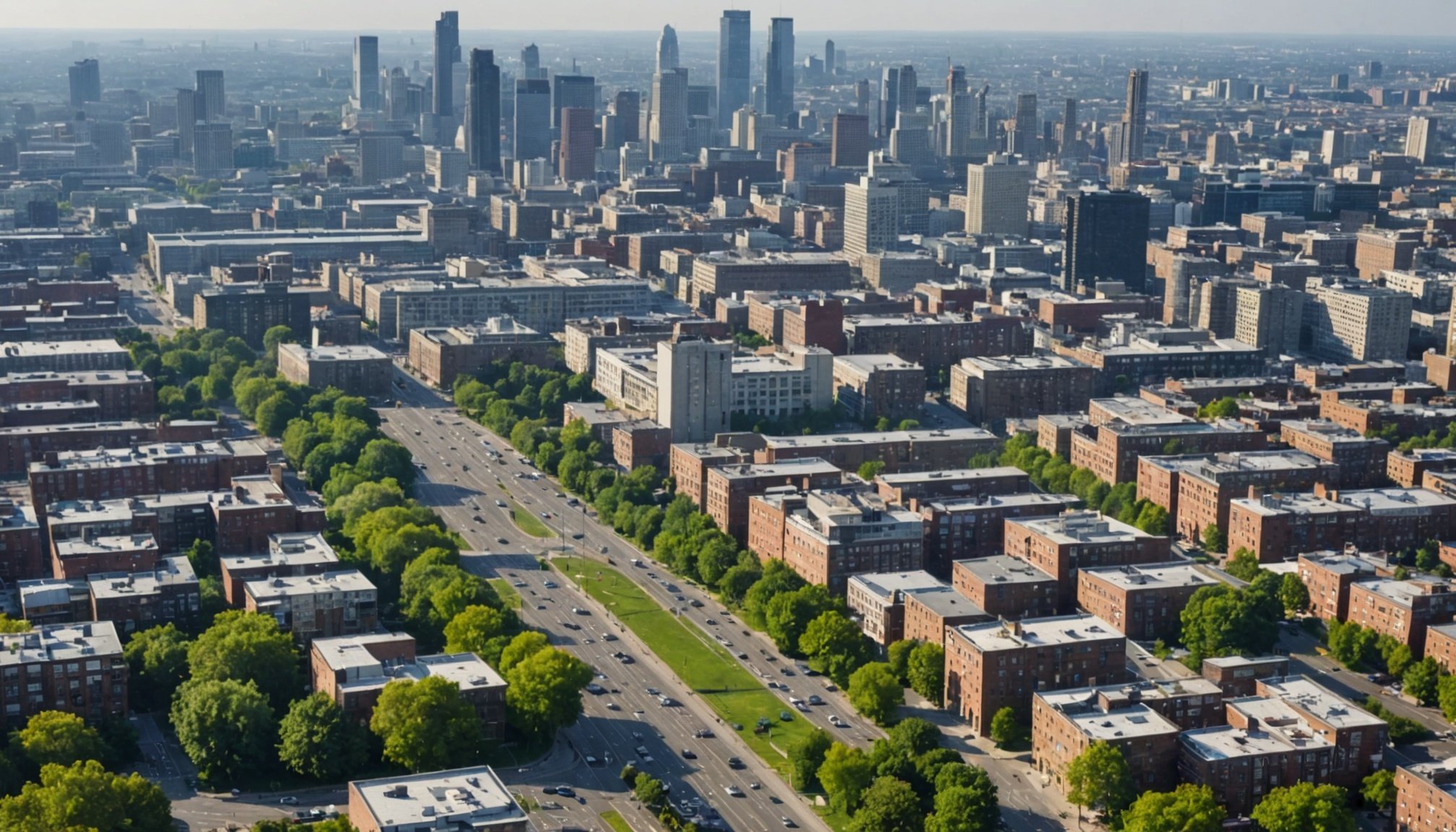Asthma is a chronic respiratory condition affecting millions of individuals worldwide, particularly children. The prevalence of asthma in urban areas has raised concerns among health experts, prompting numerous studies to explore the factors contributing to its increased incidence. Urban environments are often characterized by high levels of pollution, reduced green spaces, and other environmental challenges that exacerbate asthma symptoms. As a group, children are particularly vulnerable to these influences, resulting in more frequent cases of wheezing and other respiratory issues. In this article, we will delve into how various environmental factors impact asthma prevalence in urban settings, the connection between allergies and asthma, and the implications for public health. Our aim is to provide you with valuable insights backed by science and research, helping you understand the complexities of asthma in the context of urban living.
The Role of Air Quality in Asthma Development
Air quality has been a focal point of research regarding respiratory health, particularly in urban areas where pollution levels can be alarmingly high. Numerous studies have shown a direct link between poor air quality and the incidence of asthma. The presence of pollutants such as particulate matter (PM), nitrogen dioxide (NO2), and sulfur dioxide (SO2) can significantly increase the risk of developing asthma or aggravating existing symptoms.
Also read : What are the signs of vitamin D deficiency, and how can it be addressed?
In urban environments, these air pollutants often stem from various sources, including vehicle emissions, industrial discharges, and construction activities. Children, given their size and developmental stage, may be more susceptible to the effects of these pollutants. Research indicates that children exposed to high levels of air pollution are at a greater risk of experiencing asthma-related symptoms, such as wheezing, coughing, and shortness of breath.
In terms of specific findings, a recent study published on PubMed highlighted that urban children exposed to elevated levels of traffic-related air pollution had a marked increase in asthma diagnosis rates compared to their counterparts in less polluted areas. These findings underscore the urgent need for interventions aimed at improving urban air quality to mitigate the asthma epidemic affecting our youth.
Topic to read : What are the most effective strategies for managing chronic fatigue syndrome?
Moreover, the seasonal variation in air quality, particularly during warmer months when pollution levels tend to peak, can further exacerbate the symptoms of asthma. Therefore, it is crucial for parents, guardians, and public health officials to be aware of air quality indices and take necessary precautions during high pollution periods to protect children’s respiratory health.
Indoor Air Pollution: A Hidden Threat
While outdoor pollution receives significant attention, indoor air quality is equally important in understanding the factors contributing to asthma. Many individuals spend a substantial portion of their time indoors, making indoor air quality a critical aspect of respiratory health. Sources of indoor air pollution can include tobacco smoke, mold, pet dander, and volatile organic compounds (VOCs) emitted from household products.
Children are at a higher risk of exposure to indoor allergens and irritants, particularly in urban settings where homes may be smaller and less ventilated. A study indicated that children living in homes with higher levels of mold and dust mites were more likely to experience asthma symptoms than those in cleaner environments. Additionally, homes located near busy roads or industrial areas may have higher levels of pollutants infiltrating indoor spaces.
The role of allergies cannot be overlooked either. Many children with asthma have coexisting allergic conditions, which can be triggered by indoor allergens. For instance, exposure to dust mites or mold can lead to exacerbations of asthma symptoms, making it essential to manage both asthma and allergies proactively.
To combat indoor air pollution, families can implement several strategies, such as using air purifiers, ensuring adequate ventilation, and maintaining cleanliness to minimize allergen levels. Understanding the potential hazards of indoor environments is crucial for parents and caregivers striving to protect their children’s health and well-being.
Socioeconomic Factors and Asthma Incidence
Socioeconomic status plays a significant role in the prevalence and management of asthma, particularly in urban settings. Families with lower income levels may face challenges that contribute to poorer health outcomes, including higher exposure to environmental pollutants and limited access to healthcare resources. This socioeconomic disparity can lead to an increased incidence of asthma and related complications among vulnerable populations, such as children.
Research has demonstrated that children from low-income families are more likely to experience asthma symptoms and hospitalizations due to a combination of environmental exposures and lack of adequate medical care. These families may live in areas with higher levels of pollution and fewer resources to mitigate its impact, such as parks or recreational areas that promote physical activity and healthy living.
In addition to pollution, other socioeconomic factors, including education, access to healthcare, and living conditions, significantly influence asthma management. Parents with limited health literacy may struggle to understand asthma triggers and proper medication use, leading to poorer health outcomes for their children. Furthermore, housing conditions—such as overcrowded spaces or inadequate heating/cooling—can also exacerbate asthma symptoms, especially in urban environments where such scenarios are more common.
To address these disparities, community health initiatives aimed at improving education about asthma management and ensuring access to quality healthcare are essential. Public health programs targeting low-income neighborhoods can help raise awareness about asthma triggers and promote healthier environments, ultimately reducing the burden of asthma on urban children.
The Importance of Community Awareness and Action
Community awareness and action are critical in addressing the rising incidence of asthma in urban areas. Collective efforts can lead to significant changes in the environment that could reduce asthma symptoms among children. Education is the first step. By informing families about the risks associated with pollution, allergens, and other environmental factors, communities can empower individuals to take proactive measures for health.
Schools, local organizations, and healthcare providers can play a pivotal role in spreading awareness about asthma and its triggers. Programs that teach parents and teachers how to recognize asthma symptoms and manage attacks can be invaluable. Additionally, creating environments that minimize exposure to pollutants—such as advocating for reduced traffic congestion, promoting cleaner public transport, and supporting green space initiatives—can improve air quality for everyone.
Moreover, local governments can enact policies aimed at improving air quality and promoting sustainable urban development. This includes regulations on emissions from vehicles and industries, as well as investments in public transportation and clean energy sources. Research from PubMed highlights that cities that prioritize clean air initiatives have seen a decline in asthma rates, emphasizing the positive impact that community efforts can have on public health.
Finally, community support networks can provide families with resources and assistance in managing asthma. This can include connecting them with healthcare services, offering financial aid for medications, or creating support groups for parents of asthmatic children. By fostering a culture of awareness and action, urban communities can significantly mitigate the effects of environmental factors on asthma.
The relationship between environmental factors and asthma incidence in urban areas is complex and multifaceted. As we’ve explored, air quality, indoor pollution, socioeconomic factors, and community awareness all play significant roles in the respiratory health of children. Understanding these connections is crucial for public health initiatives aimed at reducing asthma prevalence.
Moving forward, it’s essential for parents, healthcare providers, and policymakers to collaborate in creating healthier environments for children. This involves advocating for cleaner air, better housing conditions, and increased awareness of asthma management strategies. As urban areas continue to grow, addressing these environmental factors will be vital to ensuring that the health of future generations is safeguarded.
By working together, we can strive towards reducing the burden of asthma and improving overall health outcomes in urban settings. Awareness and proactive measures can lead to significant changes, allowing our children to breathe easier and live healthier lives.










